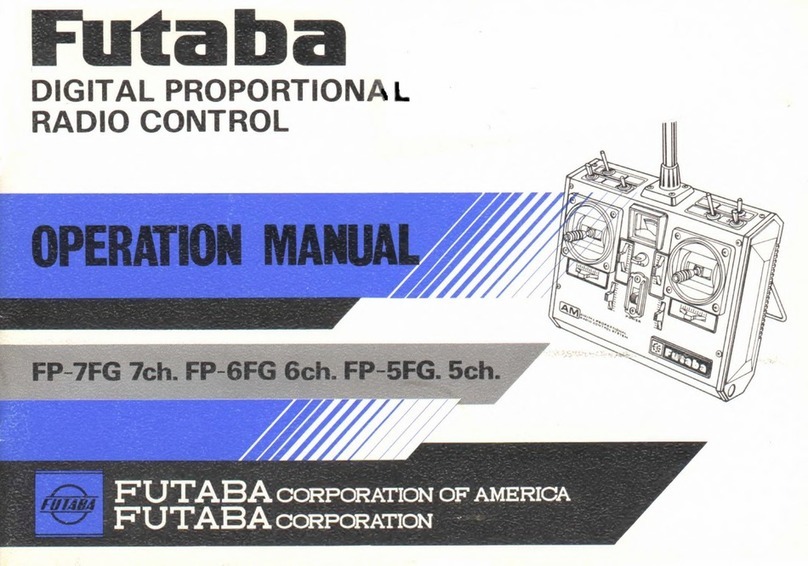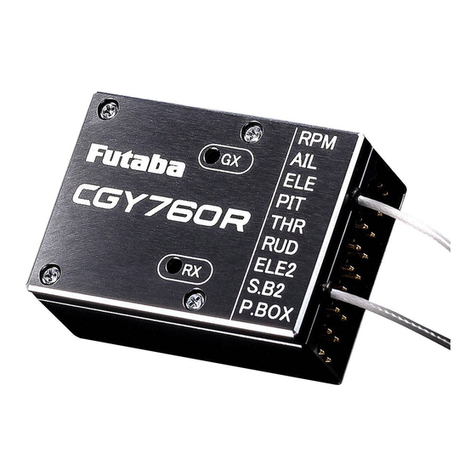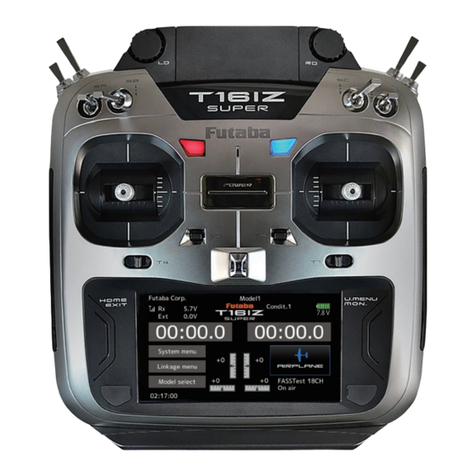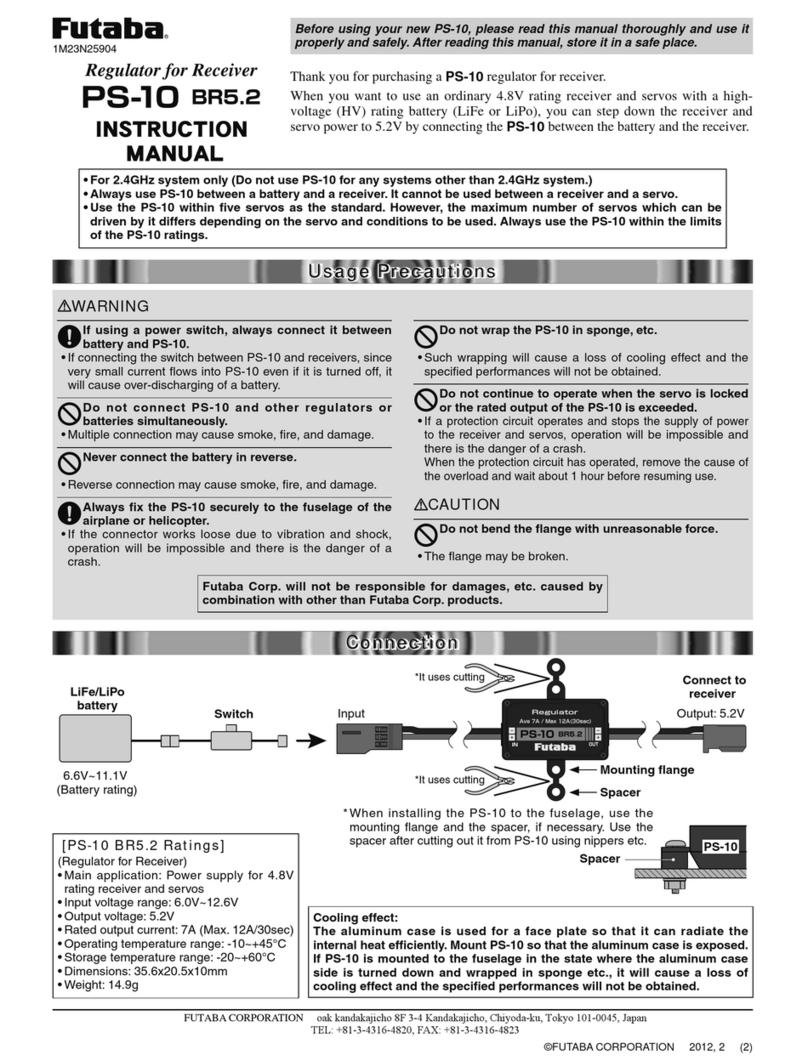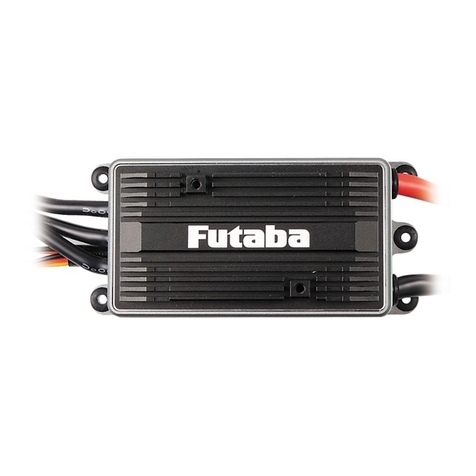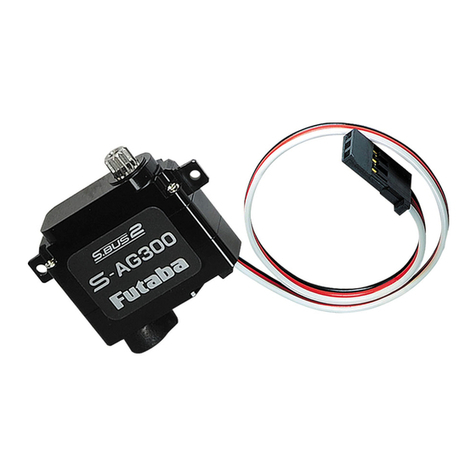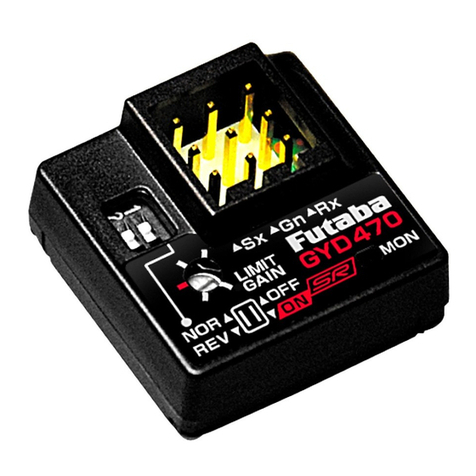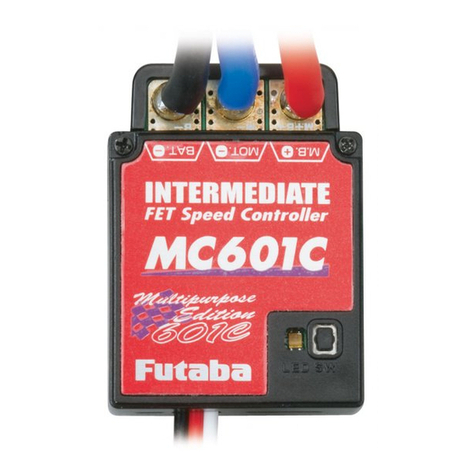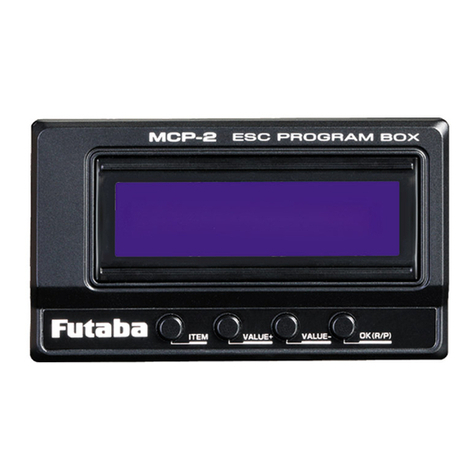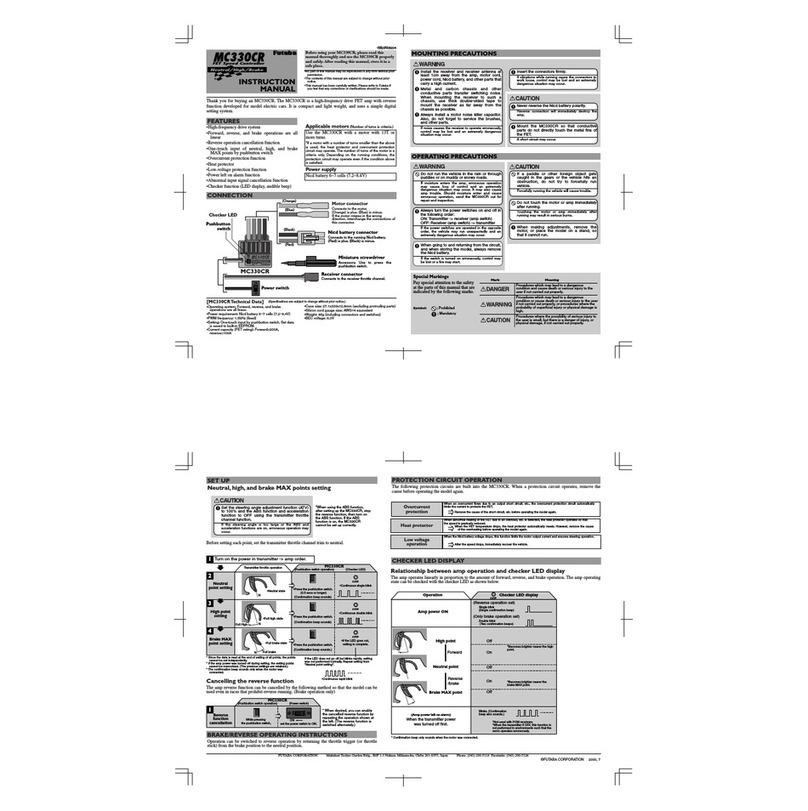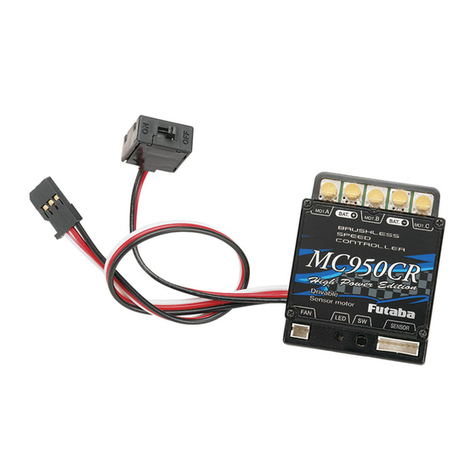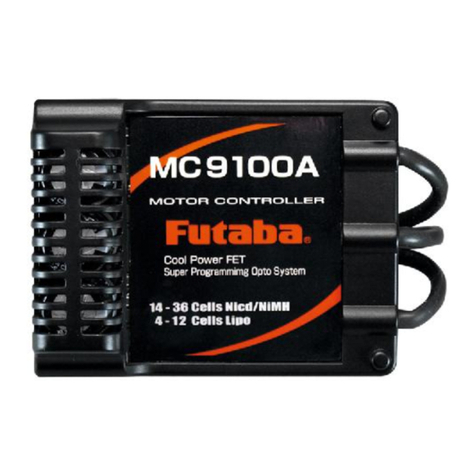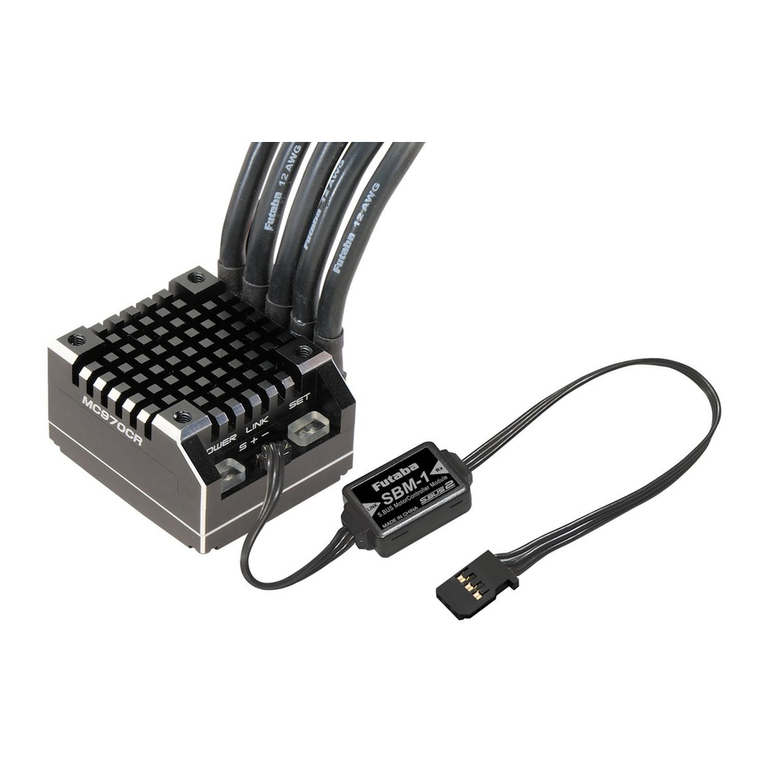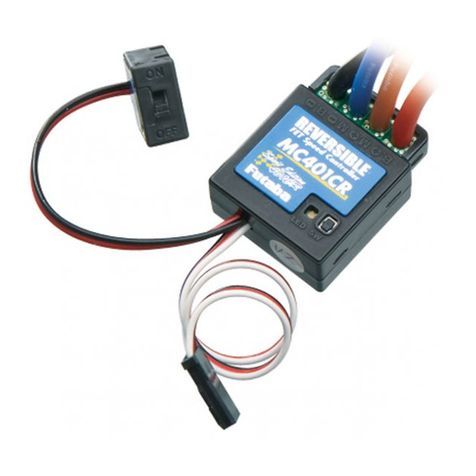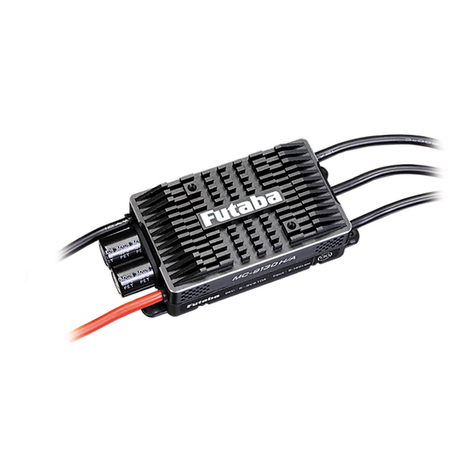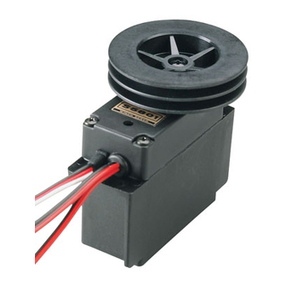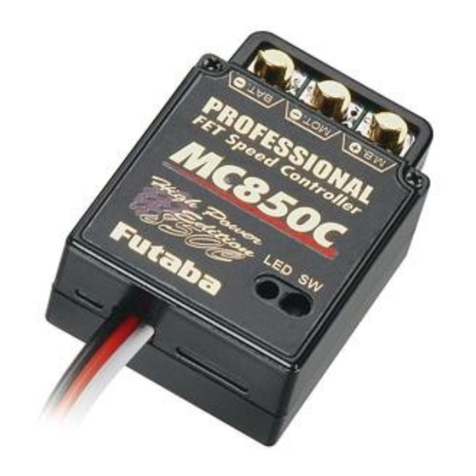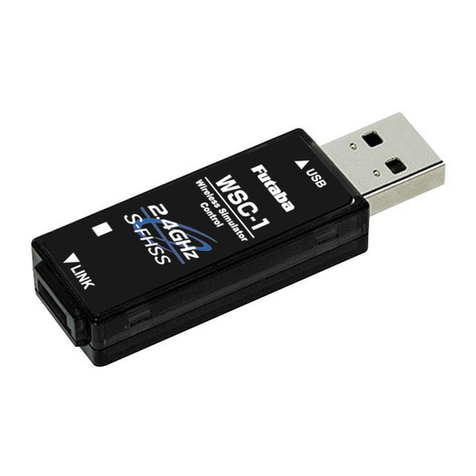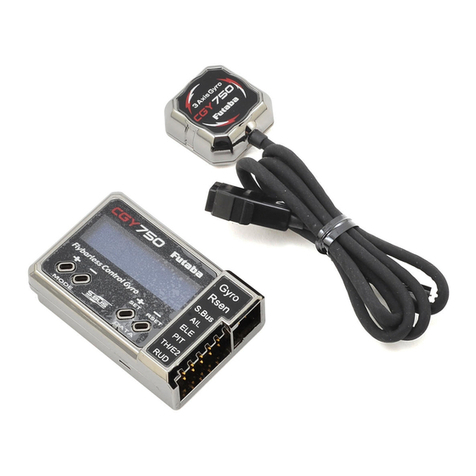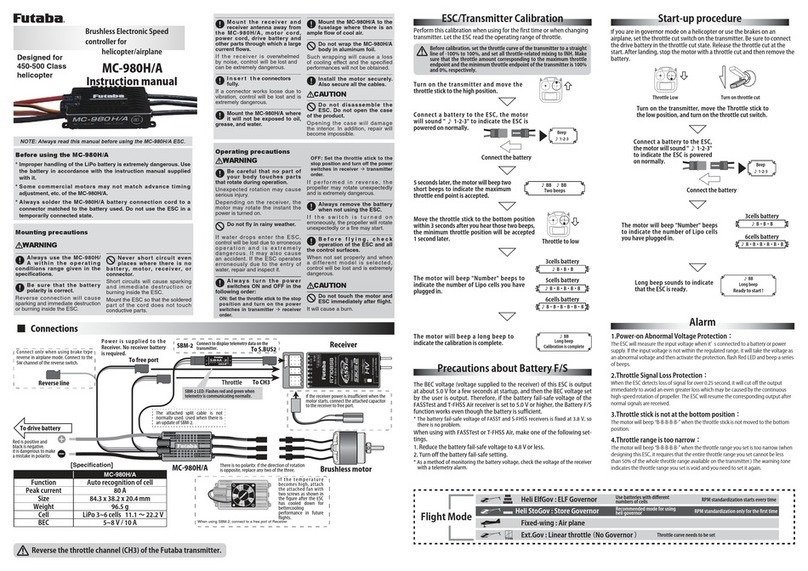
S.BUS28mmservoforglider・F3K
1M23N37102
ŬƑƖƗƕƘƆƗƌƒƑŃƐƄƑƘƄƏ
Specifications
FUTABA CORPORATION
Hobby Radio Control Business Center Sales & Marketing Department 1080 Yabutsuka, Chosei-mura, Chosei-gun, Chiba-ken, 299-4395, Japan
TEL: +81-475-32-6051, FAX: +81-475-32-2915
©FUTABA CORPORATION 2021, 1 (2)
What is S.BUS?
Different from conventional radio control systems the
S.BUS
system uses data communication to transmit control signals from
a receiver to a servo, gyro, or other
S.BUS
compatible device. This
data includes commands such as “move the channel 3 servo to
15 degrees, move the channel 5 servo to 30 degrees” to multiple
devices. The
S.BUS
devices execute only those commands for their
own set channel. For this reason, it can be used by connecting
multiple servos to the same signal line. Many
S.BUS
servos is
in the connected state, one servo of them can be set it up. The
ID
code
of each servo is used for it.
ID code
FDQEHFRQ¿UPHGE\WKH
dedicated link software "S-Link" or the transmitter with S.BUS
setting function.
S.BUS2
Using the S.BUS2 port an impressive array of telemetry sensors may
be utilized. This servo is connectable with the both sides of S.BUS and
S.BUS2 port.
[Connection by S.BUS/S.BUS2 system]
* Can also be used together with conventional servos.
* Items required:
S.BUS
or
S.BUS2
receiver,
S.BUS2
servo,
S.BUS
hub,
S.BUS channel
setting tool
(・S.BUS channel setup compatible transmitter/・SBC-1/・CIU-2/・
CIU-3/・S.BUS channel setup compatible receiver)
[Procedure for use with the S.BUS/S.BUS2 system]
1. Set the channel at the S.BUS2 servos.
Set the channel at the
S.BUS2
servos by using an S.BUS channel setting
tool.
* Refer to the
S.BUS
channel setting tool instruction manual for the
S.BUS
servo
channel setting method.
2. Connect the servos to an S.BUS or S.BUS2 compatible receiver.
Connect the servos from the
S.BUS
or
S.BUS2
port of the
S.BUS
or
S.BUS2
compatible receiver via
S.BUS
hubs.
[Connection to conventional receiver]
Ch output/
Battery terminal
Conventional
Receiver
Battery
Conventional
Servo
S.BUS2 servo
S.BUS2 servo
* Operation is the same as that of a conventional servo.
[Operation by conventional radio control]
An
S.BUS2
servo connected to a conventional receiver operates as a
conventional servo. The channel becomes the receiver connection point.
7KHFRQWHQWVVHWE\SURJUDPPDEOHIXQFWLRQDUHHႇHFWLYH
About the S.BUS/S.BUS2 system
About the S.BUS/S.BUS2 system
S.BUS hub S.BUS hub
S.BUS or S.BUS2 output
Ch output/
Battery terminal
S.BUS or S.BUS2
compatible
receiver
Battery
S.BUS2 servo
Conventional
servo
ID:×××-××××× ID:×××-×××××
ID:×××-×××××
ID:×××-×××××
ID:×××-×××××
S.BUS2 servo →it can be used in S.BUS2 and S.BUS port.
S.BUS servo →it cannot be used in S.BUS2 port.
Futaba will not be responsible for damage, etc. caused
by the use of parts other than Genuine Futaba parts.
• Servo horn, Servo horn set screw
The S-AG300 servo horn and servo horn set screw
are for exclusive use.The conventional one can-
not be used. Be sure to use the included servo horn
and servo horn set screw. (The two included tapping
screws are for attaching to the aircraft.)
• Current consumption
Large current flows during servo operation. There-
fore, decide the safe number of uses by paying care-
ful attention to the remaining battery capacity.
• Power supply
8VH WKH EDWWHU\ DV VSHFL¿FDWLRQ 8VH D EDWWHU\ RU D
voltage regulator with an ample margin as the power
supply. The specified performance cannot be dis-
played with a dry cell battery.
Even if using a receiver with the BATTERY FAIL
SAFE function, it may not operate correctly. There-
fore always check the battery voltage and charge the
battery quickly.
• System use
For full performance, 2.4GHz system is recommend-
ed.
• Programming function
This servo can be connected to a PC by using the
CIU-2 or CIU-3 USB Adapter sold separately and its
various operating characteristics can be changed as
a programmable servo by means of dedicated soft-
ware "S-Link". S-Link is downloadable from a Futa-
ba WEB site. However, channel setting and other op-
erating characteristics settings cannot be made with
the existing S.BUS PCLink software. When you use
a transmitter with an S.BUS setting function. By con-
necting a servo to the S.BUS setting connector of the
transmitter, a program setup of a servo can be per-
formed on the screen of a transmitter. This servo does
not have stop mode function. Therefore becomes as [
hold ] when the input signal of a servo stops. Depend-
ing on a setup, a servo carries out vibration. If a servo
continues carrying out vibration, it will break, please
restore a setup.
• Soft start
,QRUGHUWRSURWHFWWKHOLQNDJHRQO\WKH¿UVWRSHUDWLRQ
when the power is turned on moves the servo to the
VSHFL¿HGSRVLWLRQ VORZO\ :KHQD QHZFRQWURO VLJQDO
enters while the soft start is operating, it become nor-
mal operation at once.
WARNING
Turnonthepowerintransmitter →receiverorder.In
addition,alwayschecktheoperationofalltheservos
beforeflight.
Donotinsertorremovetheservoconnectorwhilethe
receiverpowerisON. Since the S.BUS2 servo switches
the operation mode automatically according to the type of sig-
nal from the receiver, if the connector is inserted or removed
while the power is ON, an S.BUS connected servo will be er-
roneously recognized and may stop.
Donotleavetheservointhelockedstate.Leaving the
servo in the locked state (state in which enough force is
DSSOLHGWKDW WKHVHUYRFDQQRW PRYHPD\FDXVH VPRNH¿UH
and damage.
Neverconnectthebatteryinreverse.Reverse connec-
WLRQPD\FDXVHVPRNH¿UHDQGGDPDJH
Donotexposetheservotodustandwater.The servo
does not have a waterproof construction. If it gets wet, the
servo may not operate or the power supply may short circuit.
Donotusegas-powermodels,largemodelsthatrequire
hightorque.If it is used for gas-power models, large models, the
servo may be damaged by vibration and there is a risk of crashing.
Wheninstallingtheservo,checkPUSHRODLINKAGEto
makesurethereisnobindingin order to prevent exces-
sive power consumption and decrease the life of the motor
and battery.
CAUTION
Donottouchtheservocaseimmediatelyafterservo
operation. You may be burned because the motor and
circuits inside the servo become hot.
Donotturntheservohornwithunreasonableforce.The
servo may be damaged.
Donotdisassembleormodifytheservo.The servo has a
precision construction. Futaba Corp. will not be responsible
IRUDQ\GLVDVVHPEO\RUPRGL¿FDWLRQRWKHUWKDQWKRVHVSHFL¿HG
by us.
Donotdroptheservoorexposeittostrongshocksor
vibrations.It will damage with a shock.
Usetheservoasanactuatorinhobbyapplications.Fu-
taba will not be responsible if the servo is used in applica-
tions other than the above.
Thank you for purchasing Futaba's S-AG300 glider
servo. To maximize your enjoyment, and to ensure
proper sensing, please read through this manual
thoroughly. We also encourage you to retain the
manual for future reference should the need arise.
Use:
Dimensions
Weight
RatedVoltage
OperatingVoltage
Torque7.4V
Torque3.8V
Speed7.4V
Speed3.8V
Motor
Case
Gear
:Glider・F3K
:23.5 × 8.0 × 19.7mm
0.93 × 0.31 × 0.78in
:10.8g0.38oz
:4.8 〜 7.4V
:3.8 〜 8.4V
:2.5kgf・cm34.7ozf・in
:1.5kgf・cm20.8ozf・in
:0.065s/60°
:0.130s/60°
:Corelessmotor
:Allaluminum
:Metal
UNIT:mm
